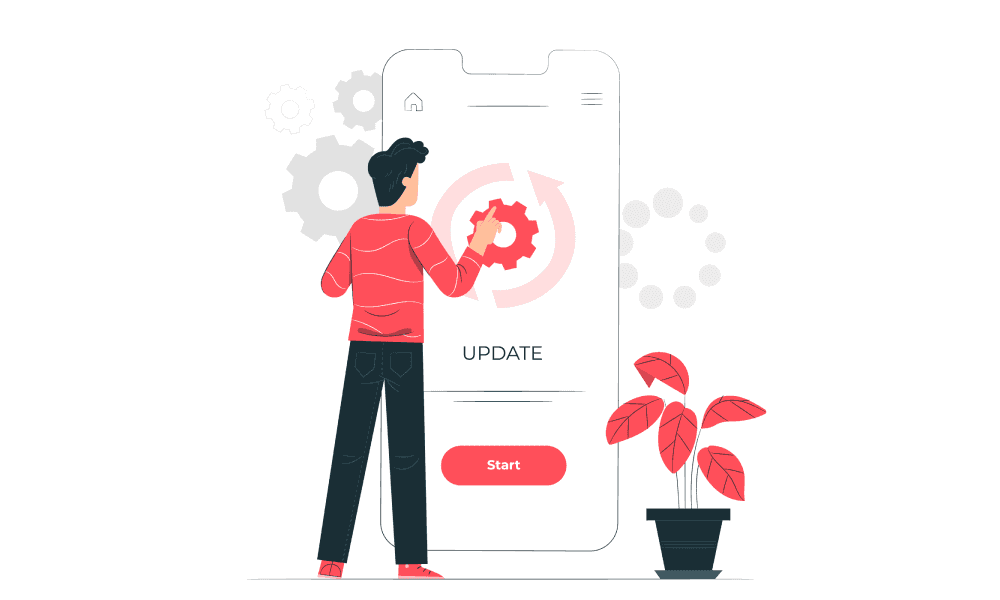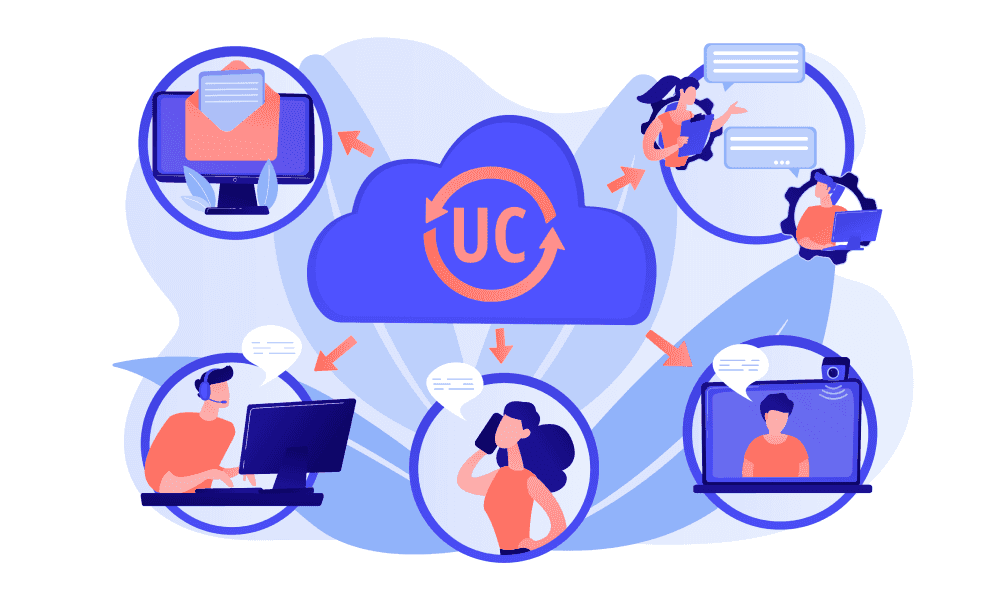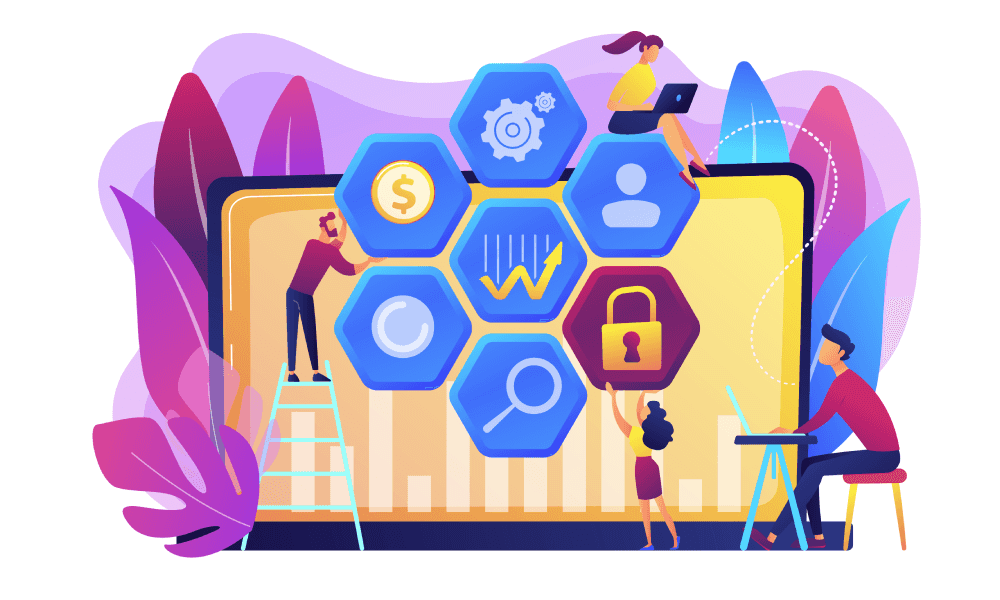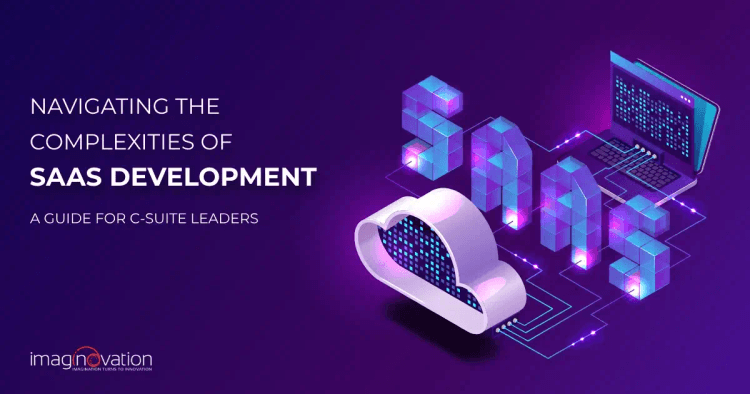Navigating the complexities of software-as-a-service requires a strategic approach and deep understanding. In this guide, we provide you with the essential knowledge and insights to successfully navigate the SaaS development landscape.
Are you ready to harness the power of SaaS and drive your organization's growth? From choosing the right technology stack to ensuring scalability and security, this guide covers it all.
Join us as we delve into the intricacies of SaaS development, offering practical advice and actionable tips for C-suite leaders. Gain the confidence to make informed decisions and lead your organization toward success in the ever-evolving world of SaaS.
Don't let the complexities of SaaS development hold you back. Get ready to dive in and unlock the potential of SaaS for your business. Let's embark on this enlightening journey together!
Understanding SaaS: An Overview
SaaS is a popular and trendy software delivery method that can be confusing yet difficult to ignore. It offers the latest technology within a set budget and provides professional support. It helps businesses maximize cost efficiency and offers high flexibility through cloud computing.
But what is SaaS?
Software-as-a-Service (SaaS) is a cloud-based software distribution model that lets you access software online.
In the SaaS model, the software is stored on faraway servers and handled by the provider. You can access this software on your device via web browsers, mobile apps, and APIs.
Zoom, Adobe Creative Cloud, Microsoft Office 365, Netflix, Google Workspace, etc., are some common examples of SaaS products.
What's unique about SaaS -
- SaaS deployments don't need a lot of hardware, so buyers can easily outsource most IT responsibilities for troubleshooting and software maintenance.
- The buyers don’t need to purchase the software with an upfront payment for a perpetual license. In fact, SaaS systems are paid through subscriptions.
A lot of businesses turn to cloud-based SaaS solutions. Here’s why they do so -
1. Easy accessibility
Simply connect to the internet, and you can work from anywhere in the world using your desktop, laptop, tablet, or mobile device.
With SaaS solutions, you can do just that. It’s that easy!
Whether working from home or traveling to different sites, SaaS allows you to conveniently access and work on your tasks through the internet.
So you can stay productive and efficient no matter where you are.
And, even if a user's computer or device fails, no data is lost because it is stored in the cloud.
2. Scalability
SaaS offers you the flexibility to customize your application/software usage to fit your business needs without any hassle.
The software is hosted by the SaaS application development company, giving you the flexibility to change your usage plan on the go without any advance notice.
And that's not all!
As your business expands, you can effortlessly adapt the system to accommodate more users, handle larger data volumes, and add new functionalities.
It's like having a system that grows alongside your business, allowing you to scale up or down seamlessly and stay ahead of the game.
3. Cost-effective
When it comes to choosing SaaS, here’s why we consider it cost-effective:
- With SaaS, you no longer have to pay for the purchase and installation of software upfront. This eliminates the need for hefty initial investments.
- Because of SaaS's subscription-based nature, you eliminate the financial risk of buying expensive software. You can thus enjoy its benefits without worrying about high costs.
- Instead of spending a lot on hardware resources, SaaS applications are easily downloadable and require minimal maintenance on your end. This means you can save both money and effort.
- Besides, SaaS operates on a pay-as-you-go pricing model, ensuring you only pay for the software you actually use. This helps you reduce costs and avoid wasting resources on unused licenses.
- Small businesses, in particular, benefit from SaaS as it provides access to high-powered software that would otherwise be expensive or unattainable due to budget constraints.
4. Automatic updates

With SaaS, you can sit back and relax while your software stays up to date effortlessly.
It is because all the updates are automatically deployed by the service provider, saving you from the hassle of managing local updates.
And that's not all!
Unlike traditional delivery methods, where updates must be tested and manually installed on each machine, SaaS provides seamless updates to all customers at once.
Everyone gets the latest version simultaneously, saving you time and valuable resources.
5. Security
With SaaS, you can enjoy high security without the stress and effort of managing it yourself.
The responsibility for data security falls on the shoulders of the SaaS service provider. They implement top-notch security measures like encryption, firewalls, and regular security audits.
This means your data is in safe hands, protected from potential threats.
Moreover, SaaS providers have dedicated security teams who constantly monitor and address security risks. They stay vigilant, so you don't have to worry about breaches and unauthorized access.
6. Reduced IT complexity
SaaS gives you the freedom to let someone else handle the IT infrastructure while you focus on other essential things.
By leveraging SaaS, you can offload a significant portion of your IT responsibilities to the cloud provider.
This means you don't have to worry about setting up and maintaining complex infrastructure in-house. Instead, you can rely on the cloud provider's expertise to handle it for you.
As a result, your internal resources are freed up to tackle other important tasks and projects. This reduction in IT complexity allows your company to scale more quickly. You can focus on growing your business without getting bogged down by technical intricacies.
Navigating Common Challenges in SaaS Development
SaaS projects are gaining popularity in businesses.
From CRM and ERP software to project management and collaboration tools, the possibilities in SaaS projects are endless.
However, businesses may face challenges and obstacles, potentially making their products irrelevant. It's crucial, therefore, to be aware of the issues before starting the application development process.
Are you curious to know what these challenges are? Let’s check the common SaaS development complexities.
1. Zero downtime deployment
SaaS providers prioritize performance and 100% availability but cannot always guarantee them, especially during patches and upgrades.
Ensuring constant availability and responsiveness of the application or zero downtime deployment is challenging because SaaS applications have many users accessing the system simultaneously. This makes it tough to transition smoothly without disruptions.
Besides, SaaS platforms have distributed systems, which adds to the complexity of coordinating updates across multiple servers and databases while maintaining data consistency.
2. Third-party service integration

SaaS systems need third-party integration because the internet relies on other tools and systems for many unique features. Developers use APIs to connect with these third parties for smooth operation.
For example, Uber uses Google Maps API to improve efficiency and navigation.
This integration can be challenging due to testing and confidentiality concerns. It especially becomes tricky when your service providers do not offer guidance and assistance during integration.
Besides, ensuring that different third-party services work well together and share information can be challenging.
3. User customization
SaaS applications are great because they can provide services that meet the specific needs of a large group of people. Usually, most SaaS applications offer the same user experience (UX) to all customers.
However, an application may need to work differently for different users. For example, what is needed by the customer care executives of an organization may differ from the managers within the same organization.
It's essential, therefore, to customize the application for different users. Not everyone needs access to all the functions. However, making these modifications is challenging when it comes to SaaS applications.
4. Software complexity
Creating a custom SaaS application is complex and requires thorough programming knowledge. It's crucial to understand the system architecture and design the application to be scalable and flexible so that it can be adjusted as per the customer's changing requirements.
The SaaS provider faces a challenge in finding the right balance between standardizing features for all customers and offering customization options for premium customers.
5. Ensuring standards, compliance & security

SaaS products have to follow specific regulations depending on the industry they serve. For example, payment providers must comply with PCI/DSS standards. In some regions, GDPR restrictions need to be considered for data protection.
Thus, compliance and security are crucial aspects of SaaS product development, especially database security. Industries like education and healthcare have additional compliance requirements such as LTI and HIPAA.
Moreover, multiple customers use the same SaaS products over the cloud. Therefore built-in security measures are needed to ensure nothing goes wrong. Ensuring all this can be a bit difficult.
6. Managing SaaS payments & subscription
Building a custom SaaS application is costly and time-consuming. Ongoing maintenance and support also add to the expenses.
The SaaS provider needs to be careful about billing and monetization. But this isn’t always easy.
Strategies to Navigate and Overcome SaaS Development Challenges
Fortunately, you can deal with and overcome SaaS development challenges in many ways.
Here are some strategies to help.
1. Adopt Blue-Green Deployment
To overcome the zero-downtime challenge, use a blue-green deployment strategy with two identical environments: one for production (green) and one for testing and deployment (blue). After thorough testing, route traffic to the blue environment to minimize downtime and easily switch back if issues arise.
2. Careful Selection of Third-Party Services
Choose reliable and compatible third-party services that align with your application's requirements. Thoroughly assess their APIs, documentation, support, and reputation to ensure smooth integration and ongoing support.
3. Agile Development Methodology
Adopt an agile approach to development, breaking the project into manageable iterations or sprints. This allows for flexibility, quicker feedback, and the ability to adapt to changing requirements or challenges as they arise.
4. Flexible Payment & Subscription Model.
A good billing model for SaaS offers flexible payment options. Here are some subscription/licensing options to consider:
- Fixed monthly/yearly license
- Automated subscription for recurring payments
- License based on the number of active users
- License based on the modules in the SaaS product
- License based on the number of transactions processed through the SaaS solution.
5. Prioritize Security
Implement robust security measures to protect user data and ensure compliance with relevant regulations. Conduct regular security audits, implement encryption and access controls. Do follow best practices for secure coding and data handling.
Overcome the Challenges of SaaS Development With Imaginovation
SaaS solutions are gaining popularity rapidly and for a good reason. They boost productivity, reduce costs, and enhance overall efficiency for organizations. However, its complex environment poses some challenges that must be overcome, such as ensuring compliance, standards, and security.
Contact us, and we will help you overcome the challenges of SaaS development. Our team of experts offers tailored solutions to ensure your SaaS application is a perfect fit for your business needs.
We excel in seamless third-party service integration, ensuring smooth functionality and enhanced features for your application. We understand the criticality of compliance and security, making sure your SaaS product aligns with industry-specific regulations and data protection standards.
With Imaginovation by your side, you can trust us to provide comprehensive planning and strategic guidance.
Let us work together to build a SaaS application that meets your specific business requirements.
Imaginovation is an award-winning web and mobile app development company with vast experience crafting remarkable digital success stories for diverse companies.
Let's talk.




